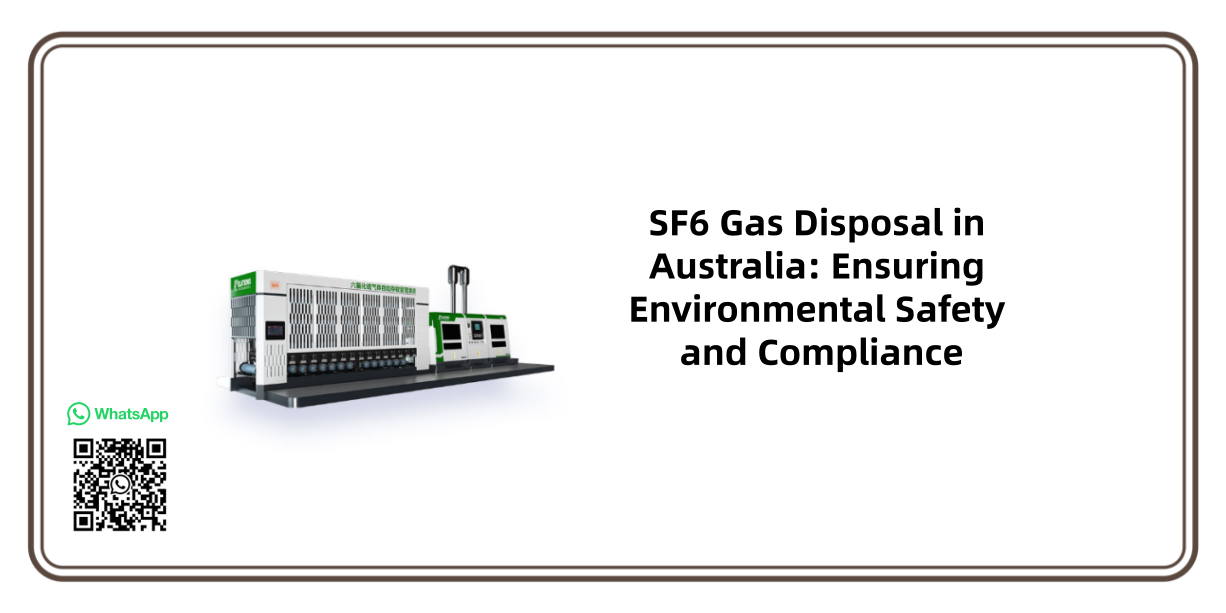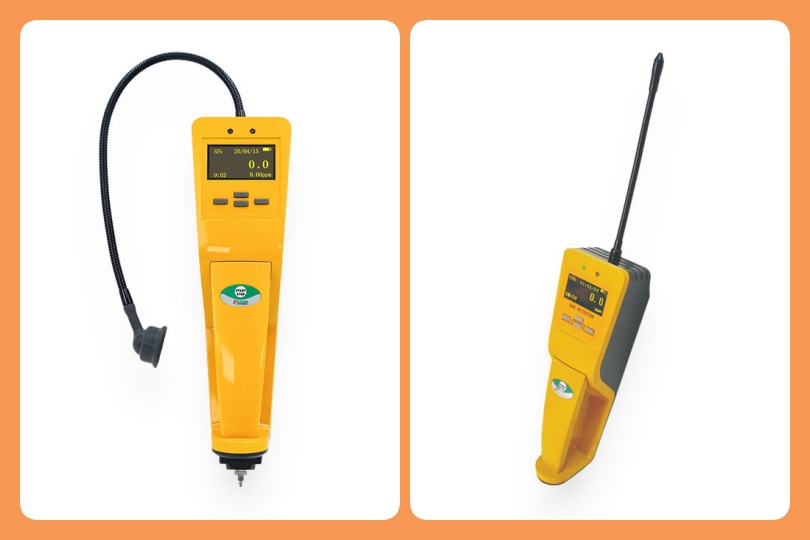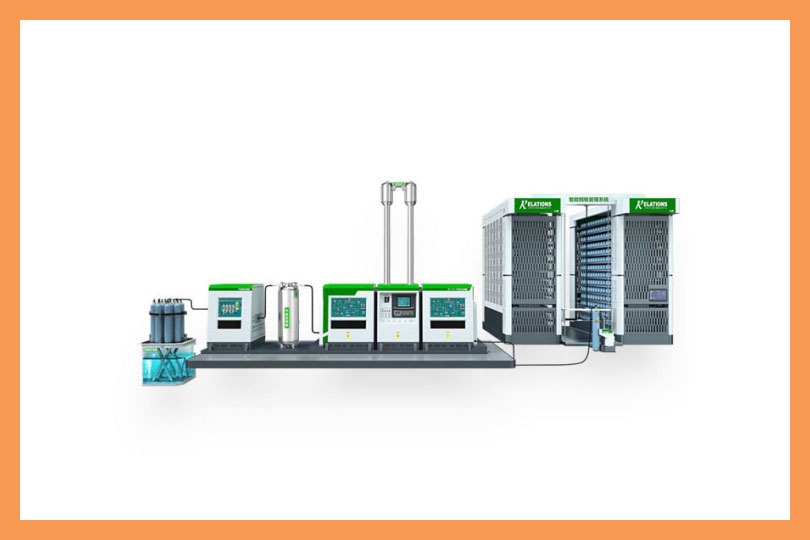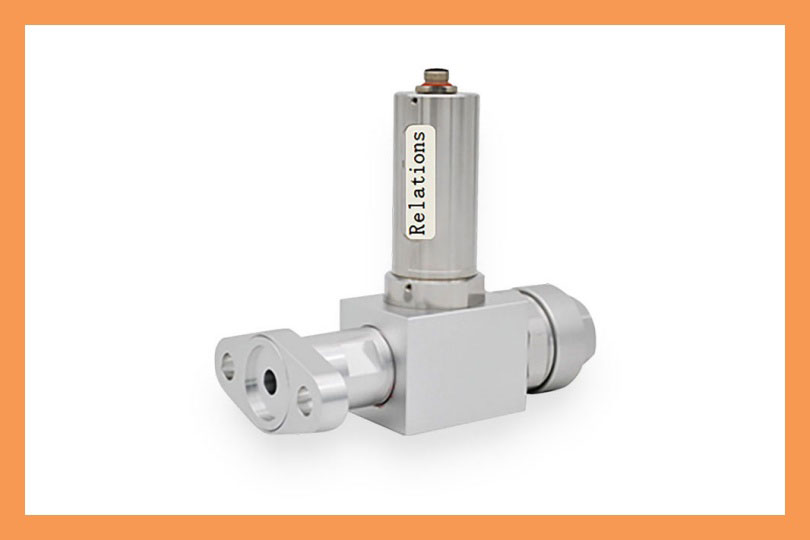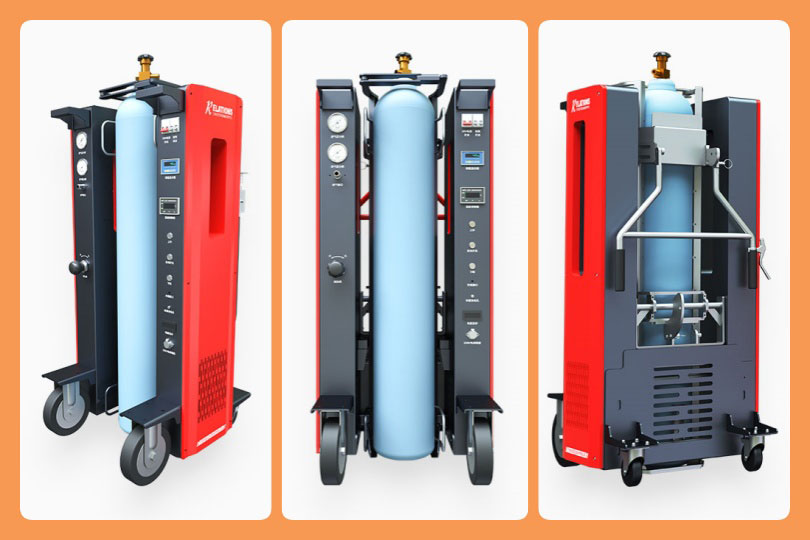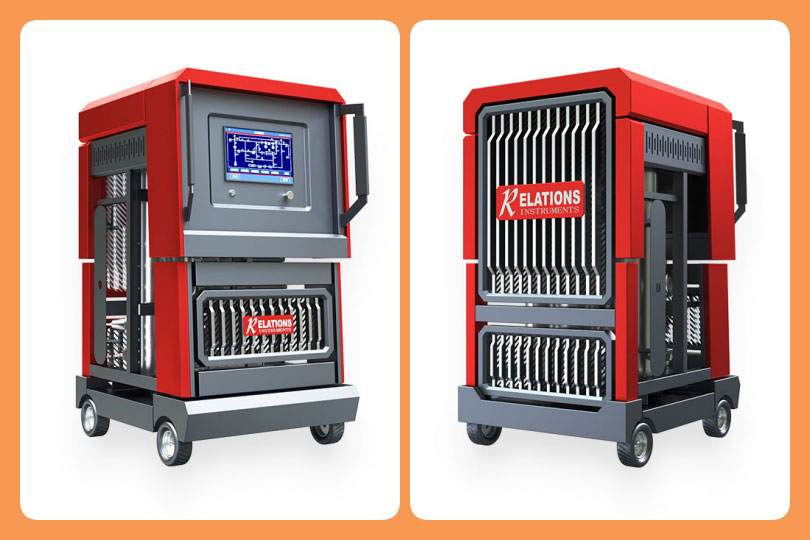SF6 Gas Disposal in Australia: Ensuring Environmental Safety and Compliance
Date
2025-10-21
[email protected]
Website
www.sf6gasdetector.com
Get Solutions And Quotes
SF6 Gas Disposal in Australia: Ensuring Environmental Safety and Compliance
Sulfur hexafluoride (SF6) is widely used in the electrical power industry, particularly in gas-insulated switchgear (GIS) and high-voltage circuit breakers, due to its exceptional insulating and arc-quenching properties. However, SF6 is also one of the most potent greenhouse gases, with a global warming potential (GWP) 23,500 times greater than carbon dioxide (CO2). As environmental regulations tighten globally, proper SF6 gas disposal in Australia has become a critical concern for industries relying on this gas. Ensuring environmentally safe and compliant disposal practices is essential to minimize environmental impact and meet regulatory requirements.
This article explores the significance of SF6 gas disposal in Australia, the challenges associated with handling SF6, the regulatory framework, and best practices for safe disposal.
Why Is SF6 Gas Disposal Important?
1. Environmental Concerns
SF6 is a synthetic gas that does not naturally degrade in the atmosphere. A single kilogram of SF6 leaked into the atmosphere has the same environmental impact as 23,500 kilograms of CO2. With its long atmospheric lifetime (approximately 3,200 years), improperly disposed SF6 gas contributes significantly to global warming. This makes proper disposal and recycling of SF6 critical to reducing greenhouse gas emissions.
2. Regulatory Compliance
Australia, as a signatory to the Kyoto Protocol, has committed to reducing greenhouse gas emissions. SF6 gas is classified as a controlled substance under the National Greenhouse and Energy Reporting Act (NGER Act) and falls under the scope of the F-Gas Regulations. Companies handling SF6 must ensure its safe disposal to comply with these regulations and avoid penalties.
3. Industry Responsibility
SF6 is primarily used in the energy and electrical industries. Power utilities, heavy industries, and manufacturers have a responsibility to manage SF6 gas responsibly, ensuring safe storage, recycling, and disposal to minimize its environmental impact while maintaining operational efficiency.
Regulations Governing SF6 Gas Disposal in Australia
Australia has implemented strict regulations for the handling and disposal of SF6 gas to address its environmental impact. Key regulations include:
National Greenhouse and Energy Reporting (NGER) Act: Requires companies to report SF6 gas usage, emissions, and disposal activities.
Environmental Protection Acts (EPAs): Enforced by individual Australian states, these acts regulate the handling and disposal of hazardous substances, including SF6 gas.
F-Gas Regulations: Mandate the recovery, recycling, and destruction of SF6 gas to prevent emissions.
Workplace Safety Regulations: Require proper training and safety measures for personnel handling SF6 gas to ensure safe operations.
Compliance with these regulations is essential for industries to operate legally and sustainably in Australia.
Challenges of SF6 Gas Disposal in Australia
Disposing of SF6 gas is not a straightforward process and comes with several challenges:
1. High Global Warming Potential
SF6 gas must be treated with care to avoid emissions during disposal. Even minor leaks during the disposal process can have a significant environmental impact.
2. Specialized Equipment
Recovering and disposing of SF6 gas requires specialized equipment capable of safely extracting, containing, and purifying the gas for recycling or destruction.
3. Limited Facilities
Australia has limited facilities equipped to handle SF6 gas disposal. This means industries often need to work with specialized service providers for proper recycling and destruction.
4. Cost
Proper SF6 gas disposal involves significant costs, including transportation, processing, and certification. However, these costs are necessary to avoid environmental harm and regulatory penalties.
Best Practices for SF6 Gas Disposal in Australia
To ensure environmentally safe and compliant disposal of SF6 gas, industries in Australia should follow these best practices:
1. Recovery and Recycling
Before disposing of SF6 gas, industries should recover and purify it using specialized recovery systems. Recovered SF6 gas can often be reused, reducing the need for new gas production and minimizing waste.
2. Partner with Certified Disposal Providers
Work with certified SF6 gas disposal providers who have the expertise, equipment, and facilities to handle the gas safely. These providers ensure that SF6 gas is either recycled for reuse or destroyed in compliance with Australian environmental regulations.
3. Leak Detection and Prevention
Preventing SF6 gas leaks during its lifecycle is critical. Regular inspections, maintenance, and the use of leak detection systems can minimize emissions and reduce the volume of gas requiring disposal.
4. Proper Documentation and Reporting
Maintain accurate records of all SF6 gas handling activities, including recovery, recycling, and disposal. Reporting these activities as required under the NGER Act is essential for regulatory compliance.
5. Employee Training
Ensure that employees handling SF6 gas are properly trained in safe handling, recovery, and disposal procedures. This minimizes the risk of accidental leaks and ensures compliance with workplace safety regulations.
Where to Dispose of SF6 Gas in Australia?
Disposing of SF6 gas in Australia typically involves working with specialized service providers. Some of the top disposal options include:
Certified Recycling Facilities
These facilities recover, purify, and recycle SF6 gas for reuse, ensuring minimal waste and environmental impact.
Destruction Facilities
SF6 gas that cannot be recycled is sent to destruction facilities where it is treated using methods such as thermal destruction, ensuring that harmful emissions are eliminated.
Third-Party Service Providers
Companies specializing in SF6 gas handling offer end-to-end services, including recovery, recycling, transportation, and disposal. These providers ensure compliance with Australian regulations.
Benefits of Proper SF6 Gas Disposal
Adopting proper SF6 gas disposal practices offers several benefits for industries in Australia:
- Environmental Protection: Reduces greenhouse gas emissions and helps combat climate change.
- Regulatory Compliance: Ensures adherence to Australian environmental laws, avoiding penalties and reputational damage.
- Cost Savings: Recycling SF6 gas reduces the need for new gas purchases, saving money over time.
- Operational Safety: Proper training and disposal practices reduce risks to personnel and equipment.
Proper SF6 gas disposal in Australia is a crucial responsibility for industries using this potent greenhouse gas. With stringent regulations in place, companies must adopt best practices to ensure safe handling, recovery, recycling, and destruction of SF6 gas. By partnering with certified disposal providers, implementing robust leak detection systems, and training employees, industries can minimize their environmental impact, maintain regulatory compliance, and contribute to a sustainable future.
As Australia continues to prioritize environmental protection, industries must play their part by managing SF6 gas responsibly. Whether through recycling or destruction, proper SF6 gas disposal is key to protecting the environment and ensuring the long-term sustainability of Australia’s energy sector.
